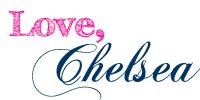Recently I downloaded the iFont Maker app on my iPad. It's a neat and addicting app that lets you create your own fonts. It's only $6.99, which isn't bad because I loooove this app. It's pretty easy to use and figure out. However, when I first opened the app I was overwhelmed. So, I thought I would make a quick tutorial on how to use it!
Okay, the first button is a plus sign. This lets you create new fonts.
The button next to it, looks like a folder. This lets you open saved fonts and edit them or view them.
The next two icons I don't really use. You can turn on a grid and some lines that help guide you to make your font. I suppose if you are making really detailed fonts, this is a good thing to use but I have naturally messy hand-writing so I don't even turn them on.
In the background you can see the letter A. This is a guide for you. The icon in the picture lets you change the font of the guide letter.
This setting is what you want on to draw or write your font letter (called glyphs).
The next two icons are editing tools. The one right next to your draw icon lets you edit a specific stroke. The next icon lets you nudge strokes. For example:
The arrow is pointing to where I "nudged" the glyph. Also, in this picture you can see the grid and lines that I was talking about earlier. When the nudge icon is pressed, the icon next to it turns into a sprocket. This lets you change the radius (or how much your nudge at certain points). When the nudge feature isn't on, the icon is the brush settings icons, shown in the pictures below.
There are four brush settings: paint brush, fine tip pen, pencil and a straight line. The last icon is the "next" button, which takes you to the next glyph (or letter) when you are done.
 |
| These are the brush settings. The radius at the bottom lets you determine how thick you want the font to be. |
Next to the brush setting icon, is a pair of scissors. This lets you either clear the entire letter or copy it. Next, there are two half circle icons. The first lets you undo your last stroke. The next button lets you redo the last stroke.
Okay, now let's head to the top menu. You will notice that at the top you see each different letter. This gives you a preview of each letter you made. That is what the glyph's button shows. If you push the compose button next to it, you will see these screens:
It lets you type a word, so you can see what it will look like in your font. You can also adjust the spacing of the letters here. The Pangram button lets you see the whole alphabet in your font. Okay, now go back to the glyphs setting.
The first icon has different letters. That lets you change alphabet characters (for example, japanese). The next icon is the font settings. You can also adjust your letter spacing here, as well as height, etc. The question mark is the help menu.
Last, you want to build your font! The last button at the top, lets you do this. You can attach a glyph poster (which shows you the alphabet in your font). The second button "Build Font..." lets you actually make the font. I e-mail it to myself and it lets me log into 2TTF.com to download my font. The e-mail will contain a pin number. You need that to log in to see your font. It seems overwhelming, but it really is easy once you learn what each button does!
Here are the fonts I made:
If you have any questions, feel free to leave a comment or e-mail me at cmanzullo@gmail.com


















Thanks for showing all the steps and options!
ReplyDeleteHi:
ReplyDeleteNice tutorial. I have a question:
Can I assign any glyph that I design to the alphabet letters in English?
For example if I design glyph1, glyph2, glyph3, ... etc. ( Let us say these are alphabet letters from Hebrew, Arabic etc)
Can I assign these glyphs to map (correspond) to:
Glyph1>>>> A
Glyph2>>>>B
Glyph3>>>> C
etc. ?